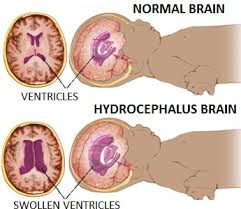Nursing Care Plan for Conginetal Talipes Equinus Varus
Conginetal Talipes Equinus Varus (CTEV) is a congenital defect that is a combination of abnormalities consisting of:
Front legs (fore foot) adduction and supination through the midtarsal joints.
Heel varus, through the subtalar joint and selalui joint equinus foot (ankle).
Medial deviation to the entire foot, seen from the knee joint.
Etiology of Conginetal Talipes Equinus Varus
The exact cause is unknown.
There are several theories:
Assessment
a. Data Collection
Identity: name, age, address, occupation, date of admission to the hospital, medical diagnostics.
b. Main complaints
Is most disturbing complaints of discomfort in activities that disrupt or current.
c. Disease History Now
Can not run perfectly because there are abnormalities on the front foot (forefoot).
d. Past history of disease
With CTEV disease is a disease inborn.
e. Family history of disease
Regarding the picture of a family health history of the descendants of the parents.
f. Psychosocial History
Who is caring for the patient, how relationships with family, friends.
g. Pregnancy History
Includes prenatal, natal and post natal.
h. Immunization History
Includes immunization: BCG, DPT, Hepatitis and Polio.
i. Developmental History
In CTEV clients typically experience a delay in walking.
Patterns of Health Functions
1. Patterns and perceptions of governance healthy life.
Lifestyle people or clients who suffer CTEV in maintaining personal hygiene, care and management of a healthy life a little bit disturbed because of a physical condition.
2. Nutrition and metabolic patterns
There is no disruption in this pattern.
3. The pattern of elimination
Bowel and bladder patterns in clients with CTEV not impaired.
4. Rest and sleep patterns
Clients with CTEV on this pattern is not impaired.
5. The pattern of activity and exercise
Clients typically have limitations because of physical activity on the front foot (forefoot).
6. Patterns of perception and self-concept
How perceptions of surgery to be performed and usually patients withdrew due to illness embarrassment.
7. The pattern of sensory and cognitive
Regarding the knowledge of patients and families against illness.
8. Patterns of sexual reproduction
Is there pain during a disturbance / not related to social reproduction.
9. The pattern of relationships and roles
Usually clients with CTEV withdrew because of an illness suffered.
10. The pattern of response to stress
Families need to provide support and encouragement of life for clients.
11. The pattern of values and beliefs
Family and patients are always optimistic and pray that the disease can be cured.
Front legs (fore foot) adduction and supination through the midtarsal joints.
Heel varus, through the subtalar joint and selalui joint equinus foot (ankle).
Medial deviation to the entire foot, seen from the knee joint.
Etiology of Conginetal Talipes Equinus Varus
The exact cause is unknown.
There are several theories:
- Genetic factors are sometimes obtained familiar (wyne davis).
- Mechanical factors (denis brown).
- Cessation of fetal growth (borm).
- Dysplasia of the muscles, causing imbalance (imbalance) muscle (Garceau).
- Primary abnormality os talus: Kaput and neck strap tapers towards deviase to medial and plantar of the corpus rope (adam, sotile, Irani and Sherman).
- MC Kay added the calcaneus to the medial rotation of the subtalar.
Assessment
a. Data Collection
Identity: name, age, address, occupation, date of admission to the hospital, medical diagnostics.
b. Main complaints
Is most disturbing complaints of discomfort in activities that disrupt or current.
c. Disease History Now
Can not run perfectly because there are abnormalities on the front foot (forefoot).
d. Past history of disease
With CTEV disease is a disease inborn.
e. Family history of disease
Regarding the picture of a family health history of the descendants of the parents.
f. Psychosocial History
Who is caring for the patient, how relationships with family, friends.
g. Pregnancy History
Includes prenatal, natal and post natal.
h. Immunization History
Includes immunization: BCG, DPT, Hepatitis and Polio.
i. Developmental History
In CTEV clients typically experience a delay in walking.
Patterns of Health Functions
1. Patterns and perceptions of governance healthy life.
Lifestyle people or clients who suffer CTEV in maintaining personal hygiene, care and management of a healthy life a little bit disturbed because of a physical condition.
2. Nutrition and metabolic patterns
There is no disruption in this pattern.
3. The pattern of elimination
Bowel and bladder patterns in clients with CTEV not impaired.
4. Rest and sleep patterns
Clients with CTEV on this pattern is not impaired.
5. The pattern of activity and exercise
Clients typically have limitations because of physical activity on the front foot (forefoot).
6. Patterns of perception and self-concept
How perceptions of surgery to be performed and usually patients withdrew due to illness embarrassment.
7. The pattern of sensory and cognitive
Regarding the knowledge of patients and families against illness.
8. Patterns of sexual reproduction
Is there pain during a disturbance / not related to social reproduction.
9. The pattern of relationships and roles
Usually clients with CTEV withdrew because of an illness suffered.
10. The pattern of response to stress
Families need to provide support and encouragement of life for clients.
11. The pattern of values and beliefs
Family and patients are always optimistic and pray that the disease can be cured.

Komentar
Posting Komentar